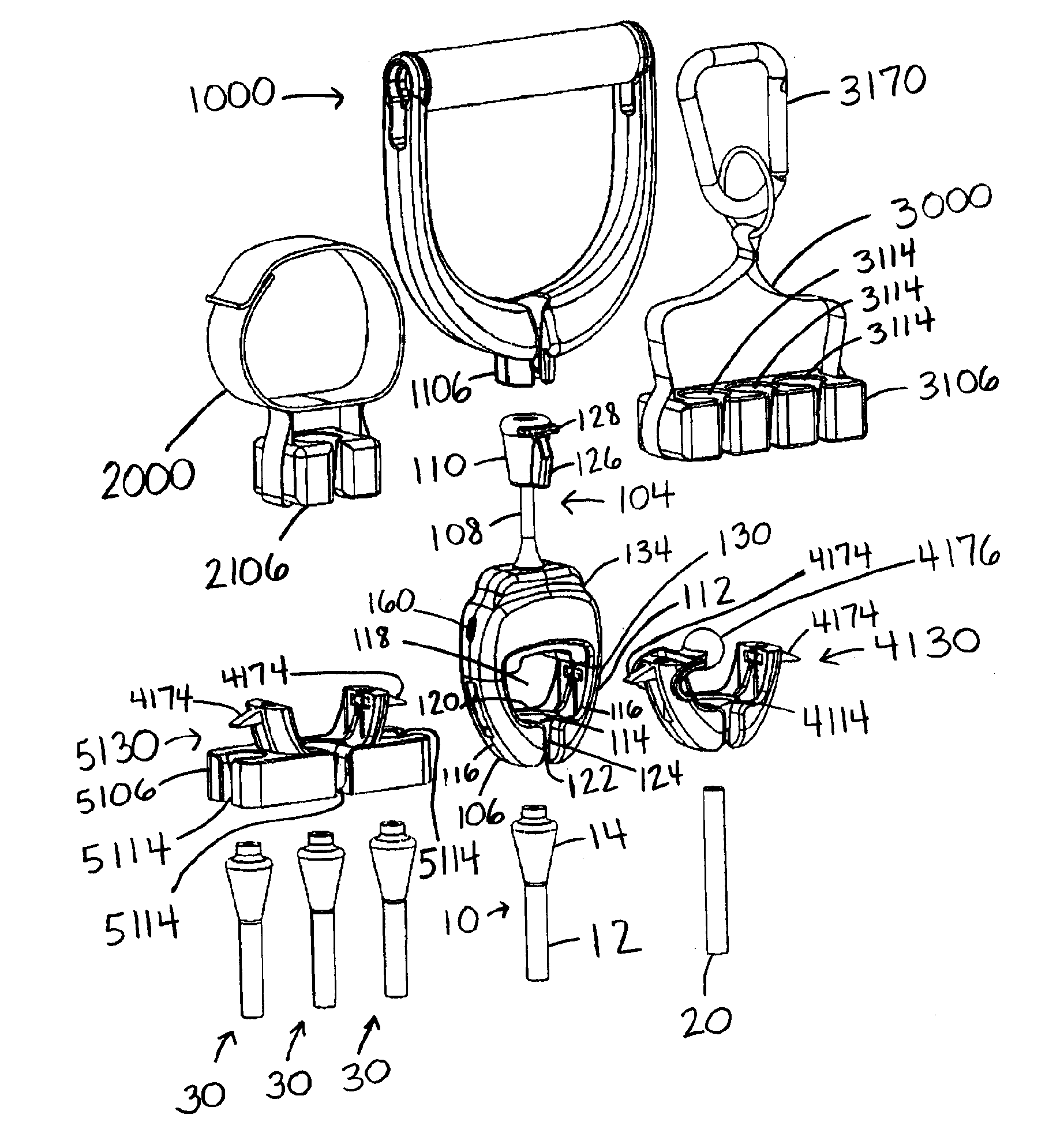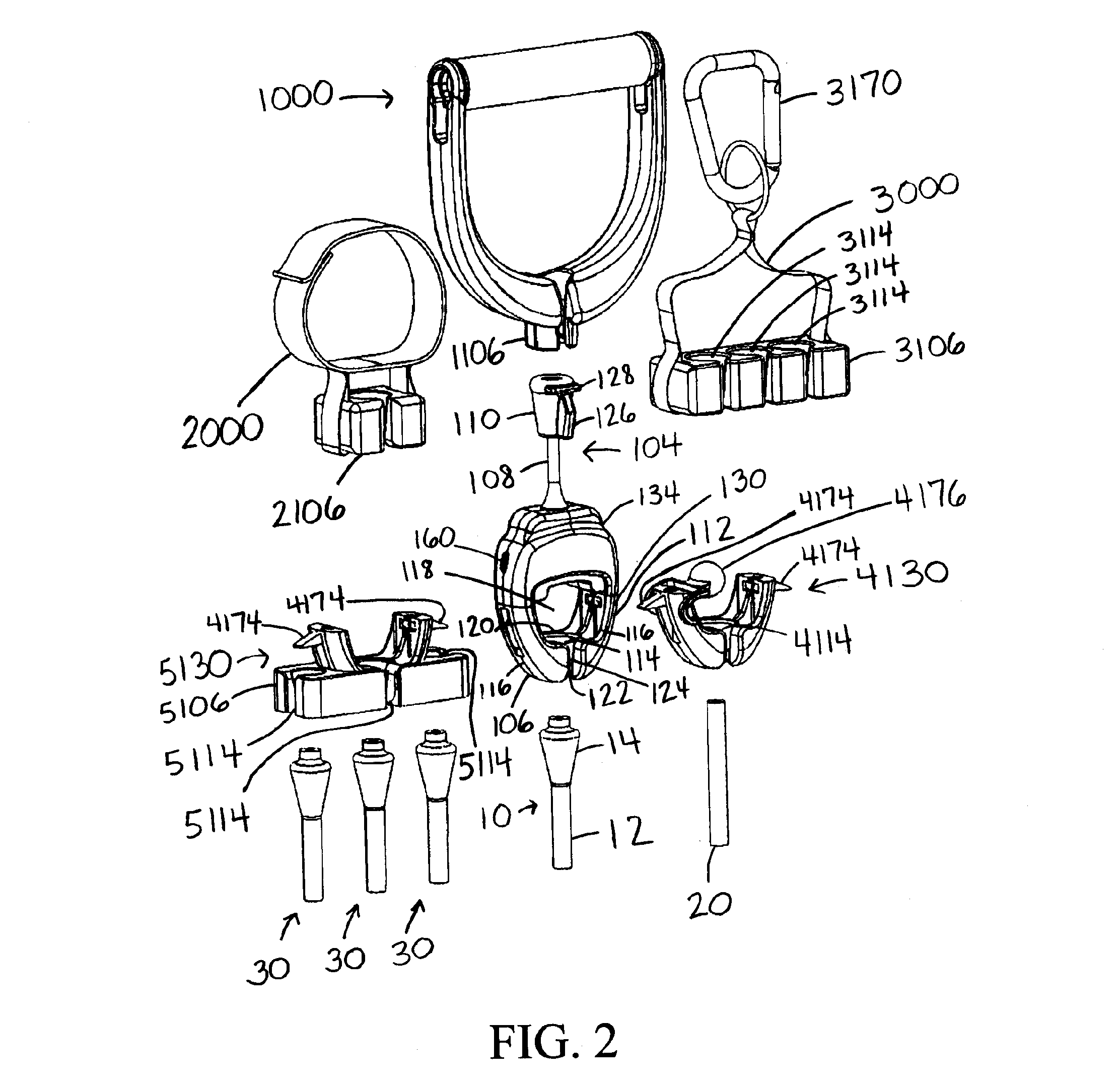Exercise devices with force sensors
a technology of force sensor and exercise device, which is applied in the direction of resilient force resistor, gymnastic exercise, muscle strength measurement, etc., can solve the problems of increased cost, inability to fully capture the force sensor, and many drawbacks of the force sensing function, so as to simplify the problem of data capture and calibration, easy to connect and disconnect, and easy to install and remov
- Summary
- Abstract
- Description
- Claims
- Application Information
AI Technical Summary
Benefits of technology
Problems solved by technology
Method used
Image
Examples
Embodiment Construction
[0017]Expanding on the discussion above, FIG. 3 illustrates an exploded (disassembled) view of the sensor body 100 of FIGS. 1 and 2. The sensor body 100 includes a female connector section 130 having bars 132 extending upwardly from the socket body sides 116, with the ends of the bars 132 being sandwiched and pinned between the depicted halves 134A and 134B of a male connector section. These bars 132 each can bear a force sensor (a load cell) 102, such that tension (or compression) between the male connector section 134A / 134B and the female connector section 130—and thus on the bars 132 and the force sensors 102 thereon—results in a measurable signal representative of the force between the male and female connectors 104 and 106 of the sensor body 100.
[0018]The plug 110 and neck 108 of the male connector 104 are then shown in FIG. 3 between the halves 134A and 134B of the male connector section 134. The neck 108 is formed of a cable 136 terminating in crimped-on bosses 138 and 140, w...
PUM
 Login to View More
Login to View More Abstract
Description
Claims
Application Information
 Login to View More
Login to View More - R&D
- Intellectual Property
- Life Sciences
- Materials
- Tech Scout
- Unparalleled Data Quality
- Higher Quality Content
- 60% Fewer Hallucinations
Browse by: Latest US Patents, China's latest patents, Technical Efficacy Thesaurus, Application Domain, Technology Topic, Popular Technical Reports.
© 2025 PatSnap. All rights reserved.Legal|Privacy policy|Modern Slavery Act Transparency Statement|Sitemap|About US| Contact US: help@patsnap.com



